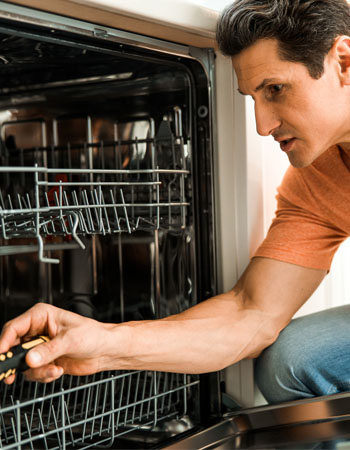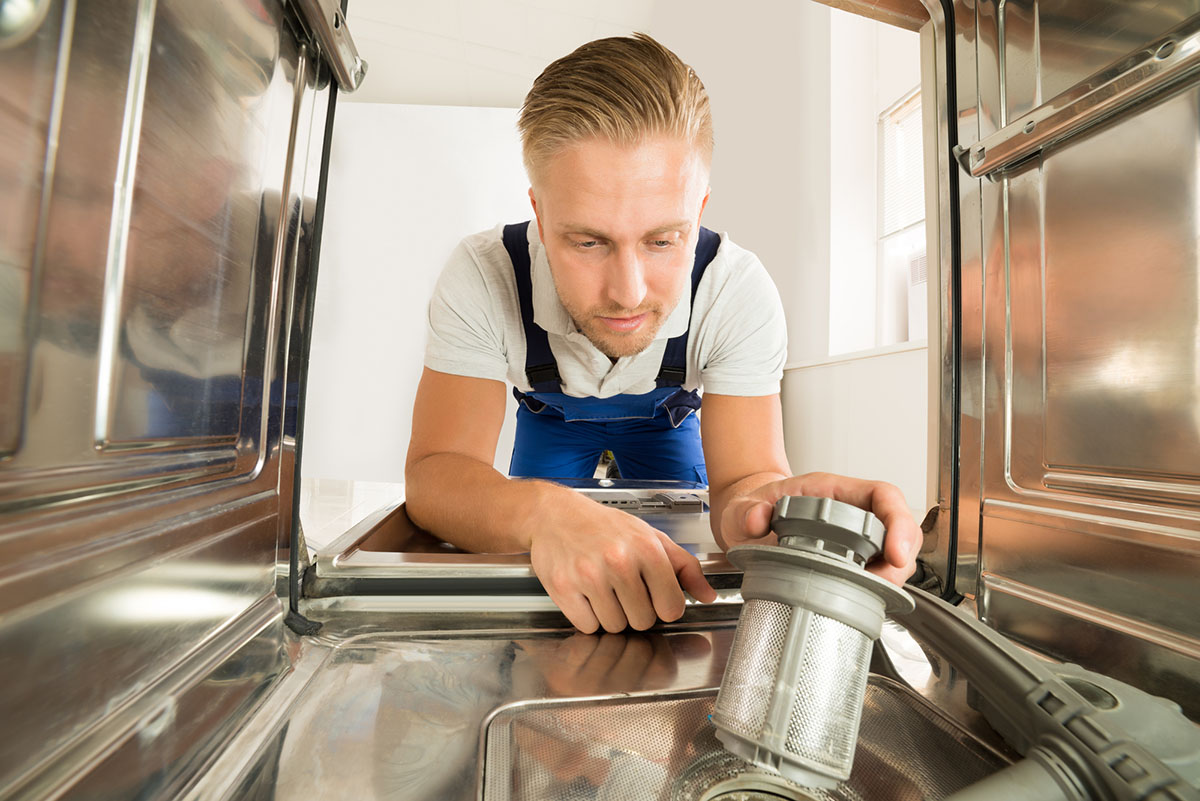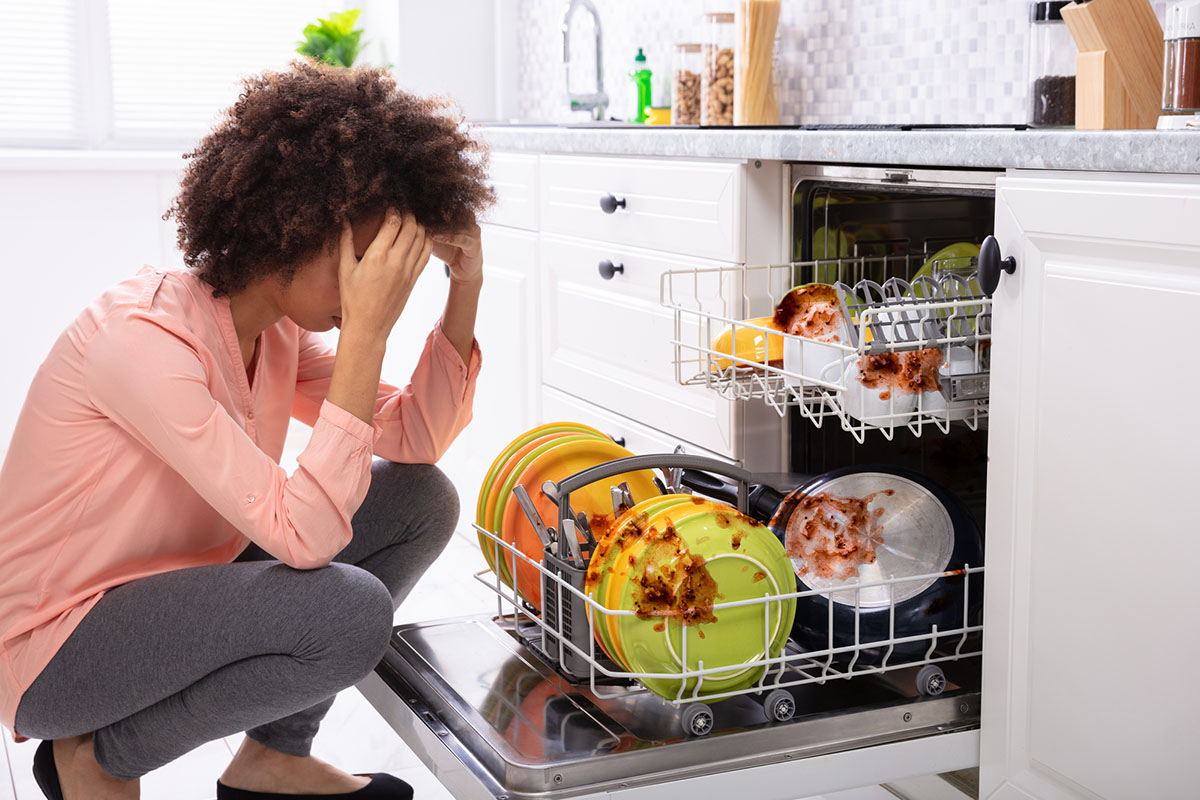We may earn revenue from the products available on this page and participate in affiliate programs. Learn More ›
Q: Help! I started my dishwasher and discovered that it’s not filling with water. I thought the door wasn’t completely closed and made sure the door was latched tightly, but that didn’t work. Why is the dishwasher not getting water?
A: Making sure the door is completely shut to activate the door switch is an important step to ensure a dishwasher fills with water. The problem can be a malfunctioning door switch, but unfortunately, there’s no one-size-fits-all answer as to why this happens; there are plenty of causes to consider. Many possible solutions rely on electrical or plumbing expertise, and identifying the root cause of a dishwasher not getting water isn’t always easy. Generally, it’s recommended to call in a professional to take a look at it. Here are some common reasons why a dishwasher is not getting water.
A defective water inlet valve may be preventing the dishwasher from getting water.

Most often, the water inlet valve is the main reason why a dishwasher is not getting water. The water inlet valve is used to fill the dishwasher with the proper amount of hot water and is controlled by a timer or electronic control. If the water inlet valve fails to open, this prevents water from entering the dishwasher. This valve, usually found in the front part of the dishwasher behind the bottom access panel, has a hose that’s connected to the water line as well as a hose coming out of it to the tub of the dishwasher. If a homeowner is comfortable inspecting the water inlet valve, they will need to unplug the dishwasher and disconnect the water supply before starting.
- Locate the water inlet valve. It’s usually found on the lower left side of the dishwasher. You will need to remove the lower access panel to locate it.
- Check for damage. Look for any signs of damage, wear, or cracking, and visually inspect the water inlet valve.
- Replace the valve. If your valve shows signs of any of the symptoms described above, the valve will need to be replaced.
A malfunctioning float switch may be interrupting power.
When water fills up a dishwasher during a wash cycle, a small plastic piece will float upward. Under the float, in the bottom of the dishwasher tub, is the float switch that signals the water inlet. If that switch doesn’t have connectivity or is broken, the water inlet valve may not open, and the dishwasher will not get water. Homeowners can unplug the dishwasher and check that the float arm mechanically triggers the float switch when the float has been raised to the height of the top of the water heater. In addition, they’ll want to make sure the wires coming out of the float switch aren’t loose.
The problem may be caused by a broken door switch, which prevents the dishwasher from filling with water.
A door switch is a simple on/off mechanism that prohibits the dishwasher from operating when the door is open. If the door switch is malfunctioning, the dishwasher will not fill with water. If a homeowner wants to check the door switch, they’ll need a multimeter to test the probes of the component.
- First, unplug the dishwasher.
- Open the door and unscrew the inner door panel.
- When you remove that panel, you’ll see the latch assembly at the top of the door. Insert the catch into the latch assembly by hand, and watch to see if closing the latch activates both of the two switches.
- If so, use a multimeter to check for continuity in the two switches.
A broken drain solenoid affects drain valve functioning.
A dishwasher drain valve is controlled by a drain solenoid. If this solenoid is faulty, it will not allow the drain valve to function, and it may be the issue with the dishwasher not getting water. Homeowners can check the drain valve and test the solenoid to be sure it is in working condition. If the solenoid is bad, they’ll want to have it replaced with a new OEM (original equipment manufacturer) part.

A damaged water supply line may be the culprit
To see if this could be the issue, homeowners can check the water supply and have a look at the water inlet hose under the sink to make sure it’s connected properly without any kinks. They’ll want to make sure the tap on the hose is in the open position—if they’re not sure which position is open and which is closed, they can turn it and run the dishwasher to see if the problem is resolved. If not, it may be time for the homeowner to hire one of the best appliance repair services to see why their dishwasher is not filling with water.


